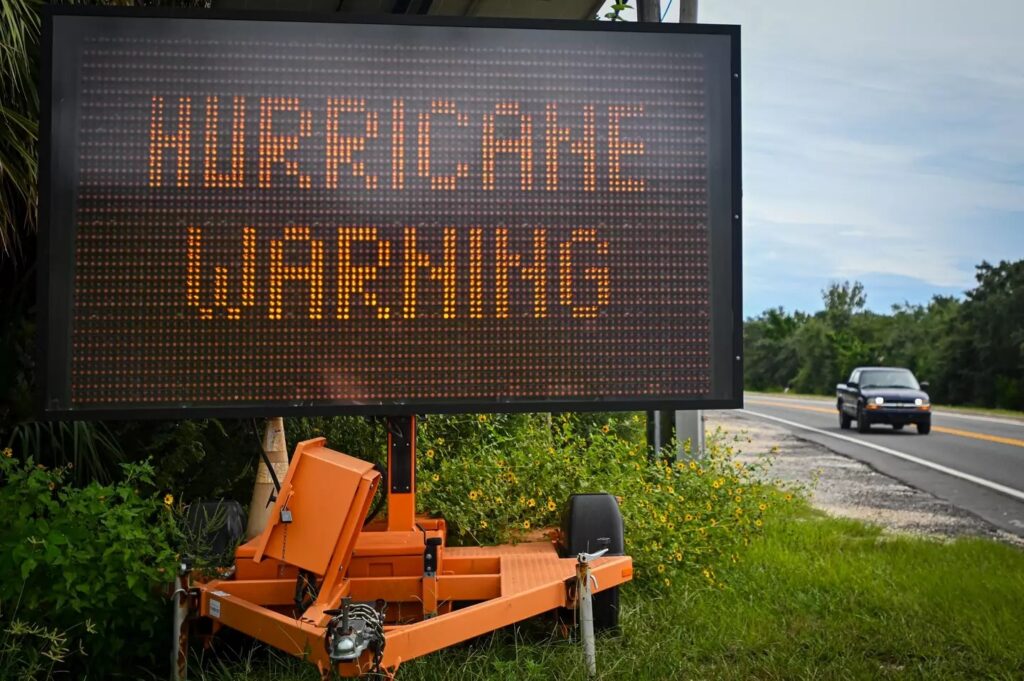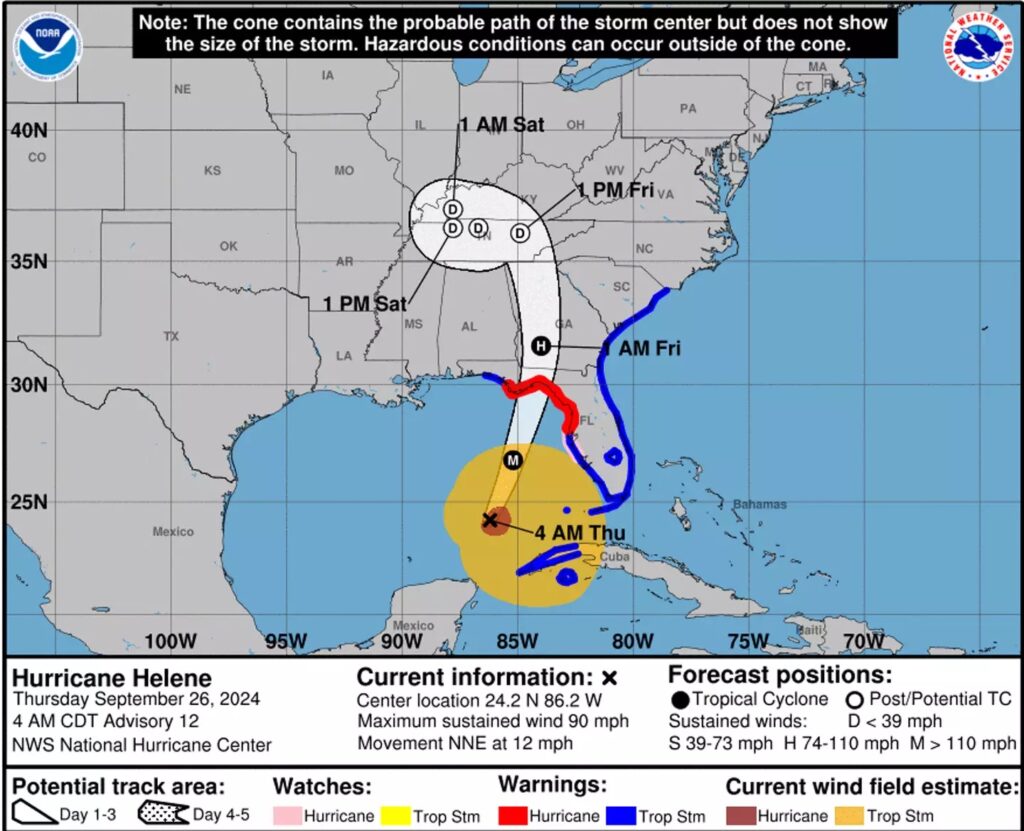Hurricane Helene, a powerful Category 4 storm, struck Florida’s Big Bend area on the night of September 26, 2024, bringing catastrophic damage.
When it first made landfall, it packed sustained winds of up to 130 mph (215 km/h), along with deadly storm surges.
The National Hurricane Center had warned about the rapid intensification of the storm as it approached the northeastern Gulf Coast, predicting life-threatening storm surges and severe damage to homes and infrastructure. By 11:10 p.m. ET on Thursday, Helene had hit Florida, and the damage was described as devastating.
Hurricanes are categorized by their wind speeds on the Saffir-Simpson scale, which goes from Category 1 to Category 5. A Category 4 hurricane has wind speeds between 130 and 156 mph, capable of causing severe damage.

In such storms, well-built homes can lose most of their roofs and even some exterior walls. Many trees are uprooted, and power poles fall, causing widespread power outages that can last weeks or even months. Areas hit by such storms can remain uninhabitable for an extended period.
After hitting Florida, Hurricane Helene began weakening and was downgraded to a Category 1 storm as it continued its journey across the southern states. By the morning of September 27, the hurricane had moved into southern Georgia, with sustained winds of around 90 mph.
Even though the storm weakened, it remained very dangerous, causing significant damage to homes, power lines, and infrastructure. The National Hurricane Center warned of damaging gusts, life-threatening floods, and storm surges in the Southeast and Southern Appalachian regions.

Helene’s path was mapped out, with predictions that it would continue moving north-northeast. By 8 p.m. on September 27, it was expected to reach Kentucky before impacting Tennessee, South Carolina, North Carolina, and Alabama.
Officials in Georgia, including Governor Brian Kemp, declared a state of emergency, preparing for the storm’s impact. The forecast suggested that the entire state of Georgia would be affected.
Sadly, by the time Helene passed through, at least six people had died due to the storm’s devastation. The National Hurricane Center emphasized that this was a dangerous situation and urged people to stay in their shelters as the storm passed, warning them not to venture out until the dangerous conditions had subsided.
Despite its weakening, Hurricane Helene remained a major threat, leaving behind a trail of destruction and loss as it traveled across multiple states.


